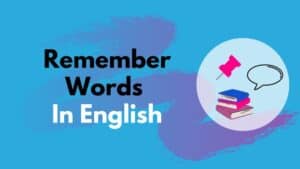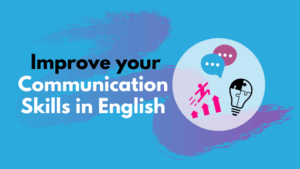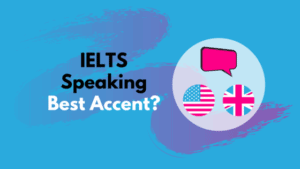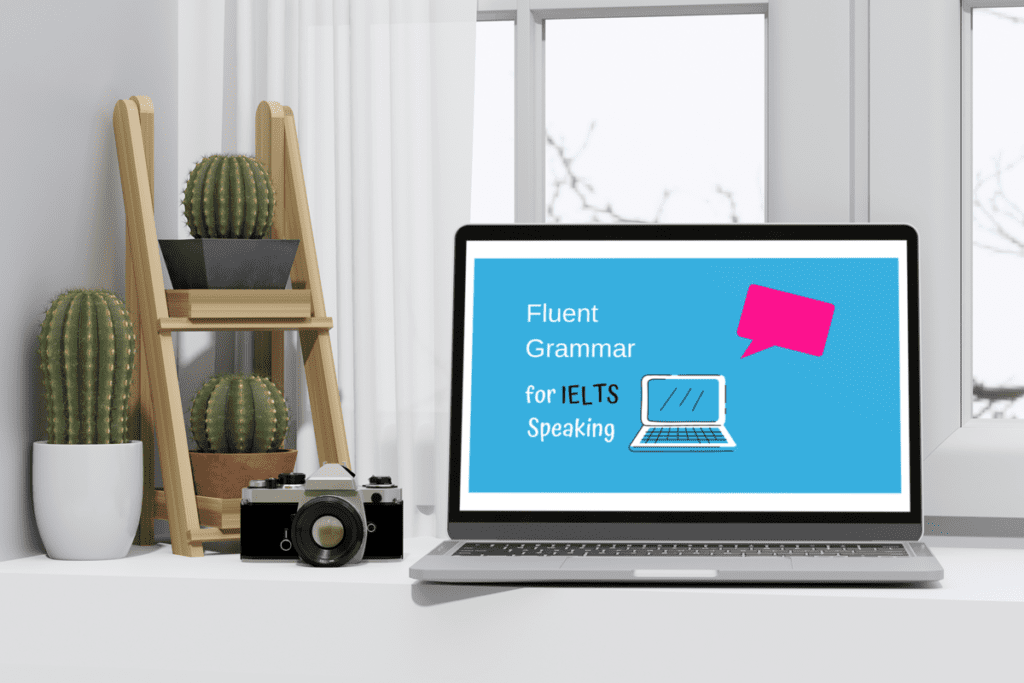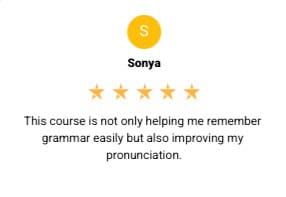The Ultimate Guide to Understanding FAST English: Advanced Listening Skills
👇 Take this lesson with you! 👇
Table of Contents
Understanding native English speakers
Do you struggle to understand native English speakers in everyday conversations, even though you have spent years learning English?
I know, it can be really frustrating, especially because you can’t communicate your ideas effectively, if you don’t first understand what other people are saying.
If this is you, then this Ultimate Guide is going to transform your listening skills forever!
The good news is that when you improve your listening skills, you will also be better able to communicate in English and then quickly become a more confident speaker of English.

Key features of spoken English
First of all, there is no quick fix to understanding native English speakers; sorry, but you need to practice listening lots. 😊
What’s important is that you use different strategies when you listen. You may be familiar with strategies like listening for the overall general meaning or listening for specific pieces of information.
In addition, it’s essential to practice listening to the following key aspects of spoken English
Once you start to identify these, your overall listening skills will start to improve.
Features of spoken English: #1 Contractions
The simple hack to better understand native English speakers, is to realise that they (I should say ‘we’ as I am also a native speaker), use contractions all the time in spoken English. So what you are expecting to hear is different from we will say.
A simple example is that when I introduce myself you may expect me to say ‘I am English’, but I will rarely say that, I will usually say ‘I’m English’.
This is a contraction, where 2 words become one, or more accurately, two words become one sound. So ‘I’ and ‘am’ become ‘I’m’.
We call this a contraction, because the verb ‘to contract’ means to make smaller. We are in effect making the sound smaller.
If you can learn to really hear these contractions, and know what they mean when you hear them, you will start to better understand fast English.
Yes, there are several other factors at play when you listen, and this alone is not the only solution to better listening skills, but it is a great place to start.
The most common English contractions
| Contraction | Pronunciation | Full form | Examples |
|---|---|---|---|
| Aren’t | /ɑːnt/ | Are not | They aren’t going to come |
| She’s | /ʃɪz/ (if unstressed) /ʃiːz/ (if stressed) | She is | She’s angry |
| She has | She’s got blue eyes | ||
| He’s | /hɪz/ or /ɪz/ (if unstressed) /hiːz/ (if stressed) | He is | He’s English |
| He has | He’s arrived | ||
| I’ll | /aɪl/ | I will | I’ll help you |
| I won’t | /wəʊnt/ | I will not | I won’t help you |
| Didn’t | /dɪd ənt/ | Did not | He didn’t come |
| Couldn’t | /kʊd ənt/ | Could not | I couldn’t agree more |
| Shouldn’t | /ʃʊd ənt/ | Should not | You shouldn’t have said that |
| Wouldn’t | /ʃʊd ənt/ | Would not | I wouldn’t like to be famous |
Once you learn how to listen for these, you will be well on your way to improving your English listening skills. Next, let’s look at another aspect of spoken English that will help you understand native English speakers better.
Features of spoken English: #2 Linking
What is linking?
Linking is where we link the sound at the end of a word with the sound at the beginning of the next word, so you hear one word or sound, rather than two.
For instance, the phrase “take it off” might sound more like one sound when spoken quickly by a native speaker.
- “take_it_off” /teɪkɪtɒf/
It may help to think of it like this,
- “ta_ki_toff” /teɪ kɪ tɒf/
This is something native speakers do almost automatically, which can be quite challenging for learners to pick up.
Why focus on linking?
The primary reason to focus on linking is that it helps you better understand native speakers and can also improve your own spoken fluency. When you start recognising these patterns, spoken English becomes less choppy and more natural to your ears.
I would also stress you don’t have to use linking when you speak, although it is a feature of natural spoken English you can develop. Here, our focus is on understanding and hearing linking sounds.
Here are 3 simple aspects of linking that will help you improve your listening skills and help you better understand native English speakers.
1. Linking consonant to vowel
When a word ending in a consonant sound is followed by a word beginning with a vowel sound, native speakers often blend them together. For example:
- Put out sounds like “pu_tout.”
- Hand in sounds like “han_din.”
This is very common with phrasal verbs because most prepositions start with a vowel sound. For example, “in,” “on,” “out,” “off,” and so on.
What’s more when we substitute the noun (e.g. homework) for a pronoun (e.g. it), then this goes between the verb and preposition, creating another linking sound.
“Hand in your homework” becomes “Hand it in” which may sound like “Han_di_tin”
2. Linking vowel to vowel
When two vowel sounds meet, native speakers often insert a slight ‘w’ or ‘y’ sound to make the transition smoother:
If a word ends in an O or U sound, and the next word begins with a vowel, we will use a /w/ sound to link.
- Go away might sound like “go-w-away.”
No idea might sound like “no-w-idea”
If a word ends in an A, E or I sound, and the next word begins with a vowel, we will use a /j/ sound (similar to ‘y’) to link
- I agree might sound like “I-y-agree.”
- He ate it might sound like “He-y-ate”
These subtle sounds help the speaker maintain a flow and avoid awkward pauses between words.
3. Linking consonant to consonant
When the same consonant sound ends one word and starts another, it typically gets blended into a single, elongated sound:
- Bad day sounds like “Ba_day.”
- Nice suit sounds like “Ni_suit.”
This can sometimes lead to misunderstandings if you’re not familiar with the technique, as “a nice suit” might sound more like “an ice suit.” Of course, the context is always going to help your understanding.
Understanding and using linking can dramatically improve both your listening and speaking abilities in English. Next, let’s look at a little-known aspect of spoken English that may be an eye-opener for you.

Features of spoken English: #3 Strong and weak forms
Good listening skills all depend on expectations. First of all, we use the context and expectations to guess what sounds you will hear. So you expect someone leaving home in the morning with a bag to say something like.
I am going to work
But what sounds do you expect to hear? You may expect to hear each word pronounced clearly, like this
- /ˈaɪ am ˈɡəʊɪŋ tuː ˈwɜːk/
However, in reality, what you will probably hear is a contraction and a weak form, like this:
- /ˈaɪm ˈɡəʊɪŋ tə ˈwɜːk/
You see the word TO, can be pronounced in two different ways.
1. To /tuː/ = Strong form (when ‘to’ is stressed)
2. To /tə/ = Weak form (when ‘to’ is unstressed)
And 90% of the time, we pronounce ‘to’ is as the weak form /tə/.
Here’s the secret! There are around 40 words in English that have both weak and strong forms. These include verbs, pronouns, prepositions, conjunctions and even articles. The key thing is these are some of the most frequently used words in English.
So if you know the weak form (which is used for unstressed words) and you know the strong forms (for when it is stressed) and you practice listening more for them, then your listening skills will improve dramatically. When I started teaching this to my students years ago when I first became a teacher, it was a game changer.
8 of the most common weak forms
Let’s look at 8 of the most common words that have strong and weak forms.
- You
- Are
- Do
- Can
- To
- For
- And
- A
1. You
You (strong) /juː/
You (weak) /jə/
Look at this phrase below. What sounds do you expect to hear?
You look great!
If we stress the adjective ‘great’, we would hear the following;
You look great! /jə lʊk ɡreɪt/
Here are some more similar examples;
- You look great /jə lʊk ɡreɪt/
- You look amazing /jə lʊk əˈmeɪzɪŋ/
- You look bored /jə lʊk bɔːd/
To improve your listening skills, do not try to hear the unstressed word, but rather focus on the stressed word.
2. Are
Are (strong) /ɑː/
Are (weak) /ə/
Look at this phrase below. What sounds do you expect to hear?
Are they here?
If we stress the adverb ‘here’, we would hear the following;
Are they here? /ə ðeɪ hɪə/
Here are some more similar examples;
- Are they here? /ə ðeɪ hɪə/
- Are they ready? /ə ðeɪ rɛdi/
- Are they late? /ə ðeɪ leɪt/
3. Do
Do (strong) /duː/
Do (weak) /də/
Look at this phrase below. What sounds do you expect to hear?
Do they know?
If we stress the verb ‘know’, we would hear the following;
Do they know? /də ðeɪ nəʊ/
Here are more examples;
- Do you know? /də jə nəʊ/
- Do you know his name? /də jə nəʊ ɪz neɪm/
- Notice we can stress DO or YOU to emphasise them, but it changes the meaning.
- Do you know? /də juː nəʊ/
- This means ‘I don’t know, what about you?’
- Do you know? /duː juː nəʊ/
This means ‘Really? I’m not sure if I believe you!’
4. Can
Can (strong) /kæn/
Can (weak) /kən/
In questions, we would use the weak form, for example,
Can you swim? /kən jə swɪm/
In general positive statements, we would also use the weak form, unless we were emphasising the verb ‘can’.
I can swim a bit /aɪ kən swɪm ə bɪt/
5. To
To (strong) /tuː/
To (weak) /tə/
What time is it in this clock?

It’s five to two
Here, you can hear both the weak form of the word ‘to’ /tə/ and the number two, which is pronounced /tuː/
Look at this phrase below. What sounds do you expect to hear?
Do you want to go?
Assuming we dress the verb ‘want’ you would hear;
Do you want to go? /də jə wɒn tə ɡəʊ/
Notice we can stress DO or YOU to emphasise them, but it changes the meaning.
- Do you want to go? /də juː wɒn tə ɡəʊ/ = I don’t, what about you?
- Do you want to go? /duː juː wɒn tə ɡəʊ/ = Really? I’m not sure I believe you!
6. For
For (strong) /fɔː/
For (weak) /fə/
Look at this phrase below. What sounds do you expect to hear?
This is for you
Normally, we would stress the pronoun ‘you’ and so you would hear,
This is for you /ðɪs ɪz fə juː/
Some more examples are;
- It’s for you /ɪts fə juː/
- It’s for me /ɪts fə miː/
- It’s for him /ɪts fə hɪm/
7. And
And (strong) /ænd/
And (weak) /ən/
One of the most famous dishes in the United Kingdom is ‘Fish and Chips,’ but how is that said?
Normally, we don’t stress the word ‘and’. We use the weak form, so it sounds like this,
Fish and chips /fɪʃ ən tʃɪps/
Here are some more examples;
- You and me /juː ən miː/
- She is tall and beautiful /ʃi ɪz tɔːl ən bjuːtɪfəl/

8. A
A (strong) /æ/
A (weak) /ə/
In all of the following examples, ‘a’ is not stressed, so we use the weak form /ə/, sometimes called the ‘schwa’.
- I am a teacher /aɪm ə ˈtiːtʃə/
- She’s a doctor /ʃiːz ə ˈdɒktə/
- He’s a banker /hiːz ə ˈbæŋkə/
You can practice listening to all of these features of spoken English in the native-speaker model answers that I use in the IELTS Speaking GOLD course.
Each model answer has an analysis of vocabulary, grammar and pronunciation that will help not only improve your listening skills, but also your speaking skills.
The whole course actually is a step-by-step system to help frustrated IELTS students become confident speakers of English, so they no longer feel stuck and can finally get a band 7 or 8 in the IELTS Speaking test.
Find out more about IELTS Speaking GOLD course by clicking here.
Features of Spoken English: #4 Sentence Stress
I mentioned earlier the importance of using different strategies when you listen, depending on the situation.
Probably the most important strategy you should learn is to focus on gist. ‘Gist’ is the overall, general idea. Just try to understand the general idea, not every word.
How can you do that?
You focus on identifying the stressed words in a text. These are the key ones you really need in order to understand what someone is saying. Teachers and linguists usually call this sentence stress.
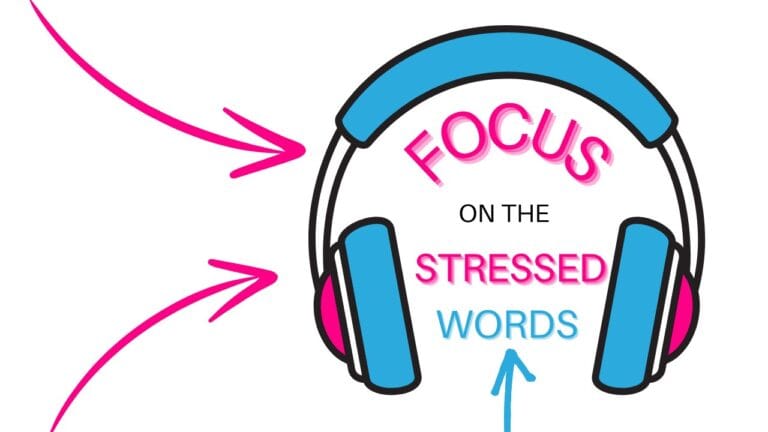
What is Sentence Stress?
Sentence stress refers to the words we stress in a sentence.
We stress the most important ones – usually the nouns, verbs, adjectives, adverbs, rather than not the prepositions, pronouns, and question words. For example,
I live in a town near London
verb noun noun
Why is Sentence Stress Important?
1) Not all languages do this.
Some languages tend to stress each word almost equally. For example, Chinese and Spanish tend to stress each syllable, at least much more than English.
English, on the other hand, is more of a stress-timed language. So, we English speakers tend to put the stress at equal time intervals, rather than on each syllable.
You can see or hear this in the following two phrases. The stress falls at the same time, despite the number of words and syllables being different.
I live in a town near London
I’ve been living in this town just near London for years
2) This is a strategy native speakers use.
Native speakers listen to stressed words to help identify the important or new information. We don’t listen out for ‘grammar words’ (e.g. have been, would, will, etc..) so much because we are so used to grammar patterns, that we will recognise the tense immediately.
However, imagine I am in a busy disco or speaking to someone over the phone – I will have strategies to help me understand what I can’t hear.
One of them is focus on the key, stressed words. Of course, I will also use context to confirm the tense and overall meaning. Sometimes I will just guess.
All of these are listening strategies you should also develop.
- Listen for stressed words
- Use the Context
- Guess
3) Sentence stress can change the meaning.
We can use sentence stress to change the meaning of a sentence too. Take the example below,
I live in a town near London
The stressed words provide the important or new information. However, I could change the meaning of this phrase by stressing different words. For example,
I live in a town near London
This change in emphasis could be used to clarify I don’t live far away from London. The word ‘town’ is probably still stressed but less so, as it has less importance.
Of course, do remember context and intonation are also important when deciding what something really means. But knowing about sentence stress is essential and will really help you understand native English speakers.
Whatever your level of English, there will always be things you don’t understand. Accept it. Don’t try to understand everything, focus on stressed words. Focus on understanding the overall meaning. Focus on gist.
We have covered 4 features of pronunciation that will help you understand natural spoken English. But these are not enough. In addition to these, you need one extra thing, and this is something most teachers don’t tell you.
Features of Spoken English: #5 Chunks
The next thing you need is to change your mindset from trying to understand individual words to focussing on chunks.
Let me explain what chunks are, and also tell you are some key chunks you should focus on when listening to native English speakers.
What are chunks in English?
A chunk is group of words that are commonly used together. For example,
A cup of tea /ə’kʌpə’ti:/
When you write English you have to learn 4 words, a-cup-of-tea, but when listen and speak you should only learn one sound.
Chunks are best learned as a single unit. They have a single sound. They can include grammar, collocations and even idioms.
Here is an idiom chunk, and this one means something is easy.
- A piece of cake /ə’pi:sə’keɪk/
This problem’s a piece of cake
This homework’s a piece of cake

Common grammatical chunks
Let’s look at some simple grammatical chunks. I am sure you will know the grammar – but you may not be used to hearing the sound.
Click to listen
1. Do you like ___?
Do you like cats?
Do you like dogs?
Do you like Picasso?
2. Would you like to ____?
Would you like to come?
Would you like to help me?
3. There are lots of _____
There are lots of people here
There are lots of cars on the road
4. I’m going to ___
I’m going to go home
I’m going to have a cup of tea
5. I used to _____
I used to smoke, but I’ve quit
I used to like it, but not anymore
6. She has been ____
She’s been on holiday
She’s been away
She’s been ill
7. Have you ever ___?
Have you ever been to London?
Have you ever met him before?
8. I would have ____
I would have helped, but I was busy
I would have gone, but I had no money
Chunks challenge!
It’s all well and good knowing about chunks, but what you need to do is start practicing trying to hear them and identify them. The more you practise the easier it will become.
So, let me get you started with a simple listening challenge. Listen to this story, first without reading, and see if you can spot some of the chunks from above. Finally, listen again and read the text to see if you identified them all.
Click to listen
The Museum Visit
Maria and Fatima were walking around the Botin museum in Santander.
“Do you like Picasso or Van Gogh?” asked Maria. Fatima said she actually liked both.
“Would you like to come to the first floor with me,” asked Maria, “there are lots of amazing Picasso paintings there. I’m going to go up there right now.”
“Actually I’ll pass,” said Fatima. She used to love visiting museums, but nowadays she found it quite tiring. After a while, all the paintings seemed to be the same. So, she went for a cup of tea.
Some twenty minutes later, Maria joined her at the café.
“I would’ve got you a coffee, but I didn’t know how long you would be!” said Fatima apologetically. “Don’t worry, I would’ve got here sooner, but I couldn’t tear myself away from the paintings,” replied Maria.
They sat down and began to discuss art together, “Have you ever been to the Prado museum in Madrid?” asked Fatima. “There are lots of great Picassos there too.”
“I was going to go with my girlfriend, but she’s been too busy recently. It’s a piece of cake for me to get time off work, but not for her. But I would like to go sometime.” said Maria.
“Yes, you must go, it’s amazing.”
After discussing more paintings, they both finally finished their coffees and headed out into the street, feeling refreshed and delighted to have had a nice cultural morning together.

How listening and speaking skills are connected
The truth is focusing on chunks helps you understand spoken English more easily, and can actually help you speak more fluently.
This is exactly what my Fluent Grammar course does. It focuses on listening to a wide range of grammatical chunks and then repeating them with correct intonation. This improves both your listening skills, your fluency and your use of grammar when speaking.
Aimed at intermediate level students and above, the Fluent Grammar course helps you use grammar confidently when speaking so you can communicate your ideas effectively in the IELTS Speaking test. Learn more by clicking the link below.
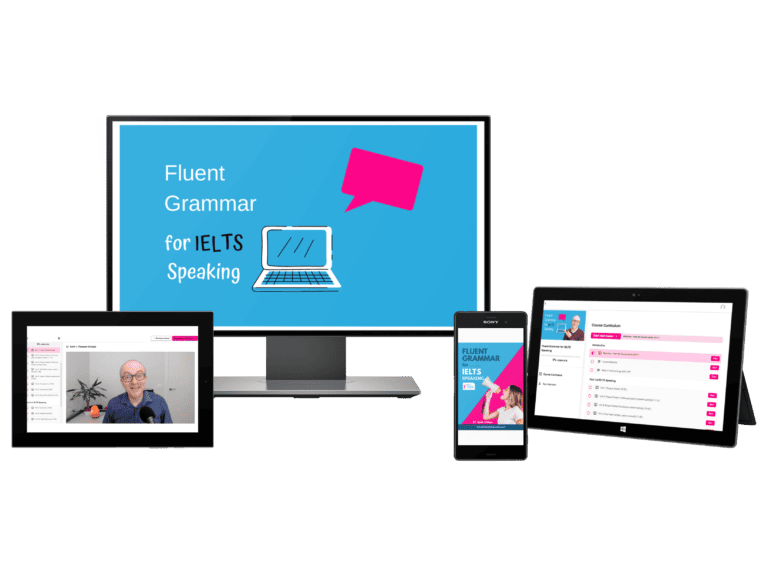
Tips for practicing listening skills
1. Practice listening without images or video
Sometimes when you listen, only listen to the sound! Don’t have images, video or text to help you. Having only the sound forces you to directly create meaning from sound, not always relying on written words or body language to give you the meaning.
2. Do dictations
Listen to short texts or dialogues of 2 to 3 sentences, maybe around 30 seconds. Do the following
- Listen once and write the key words
- Listen again and add more key words
- Listen again and try to write out everything you hear
- Check your answer with the tape script
This is what we do a lot in the Gold course live lessons, it really helps and I think students enjoy it.
3. Avoid subtitles
Subtitles encourage you to focus on each word, not stressed words. Try watching some things without subtitles so you start to train your ear to pick up the general meaning without focusing on every single word.
Subtitles can be useful for helping you learning vocabulary, but if your focus is on developing your listening skills, don’t use them, not even in your own language.
Of course, if you have a lower level of English, you may use them to help you understand sometimes, and even translate from your mother tongue. However try to create a habit of spending as much time watching videos without subtitles, as you do watching with them with subtitles. This way, you will push yourself to improve your listening skills and step by step get better at understanding native English speakers.
4. Listen widely
Engage with various types of spoken English, including dramas, interviews, and speeches. Each format challenges your listening skills in unique ways.
5. Focus on the gist
When listening to English, don’t try to understand everything, focus on the gist, the overall meaning. To understand the gist, you need to focus on the stressed words, and of course, be aware that weak forms will be used a lot. Also, remember, whatever your level, there will always be things you don’t understand. Accept that, and continue to listen.
6. Do plenty of longer listening
Listen to news stories, podcasts, movies and TV shows. Don’t look up any words, don’t take notes, just listen. The idea is to just focus on the overall meaning. It shouldn’t feel like studying. It should be fun.
7. Do meditation listening
This is where you listen and close your eyes. Your focus is on sounds rather than the meaning. You become present and just focus on each sound as it appears. It’s a very soothing and relaxing experience and a great way to improve your listening skills. There are 7 of these in the Vocabulary Vault.
8. Relax and trust your feeling for English
If you relax, trust yourself and follow the flow when you listen, you will probably understand more. Nerves make it harder to understand. Be open, relaxed and confident, and you will understand more.
9. Change your expectations
Don’t expect to understand everything. When you listen to English, be ready to not understand things, to just let somethings go by. The important thing is you get the overall meaning.
10. Listen to English at least one hour a day
Plan and organise your day to include English listening sessions. Maybe 20 minutes before everyone wakes up, 15 minutes on your commute, 10 minutes on your daily walk after lunch, 20 minutes in the gym, or even 20 minutes before bedtime.
Final Thoughts
Improving your listening skills takes time and consistent practice. By focusing on contractions, linking sounds, weak forms, sentence stress, and listening for chunks, you’ll gradually find it easier to understand native English speakers. Remember, the key is to practice actively and regularly.
For more practice, check out our online courses, where we dive deeper into these topics and provide plenty of opportunities to develop both your listening and speaking skills.
Let me know in the comments which of these tips you’re going to focus on first!
Improve your Speaking Skills with this Free Course
Crack IELTS Speaking Part 1
Learn to Speak with Confidence in Part 1 of Your IELTS Test!
⭐️⭐️⭐️⭐️⭐️
‘It’s such a great course. I’ve learned so many usages for speaking part 1.’
Zu Htet

